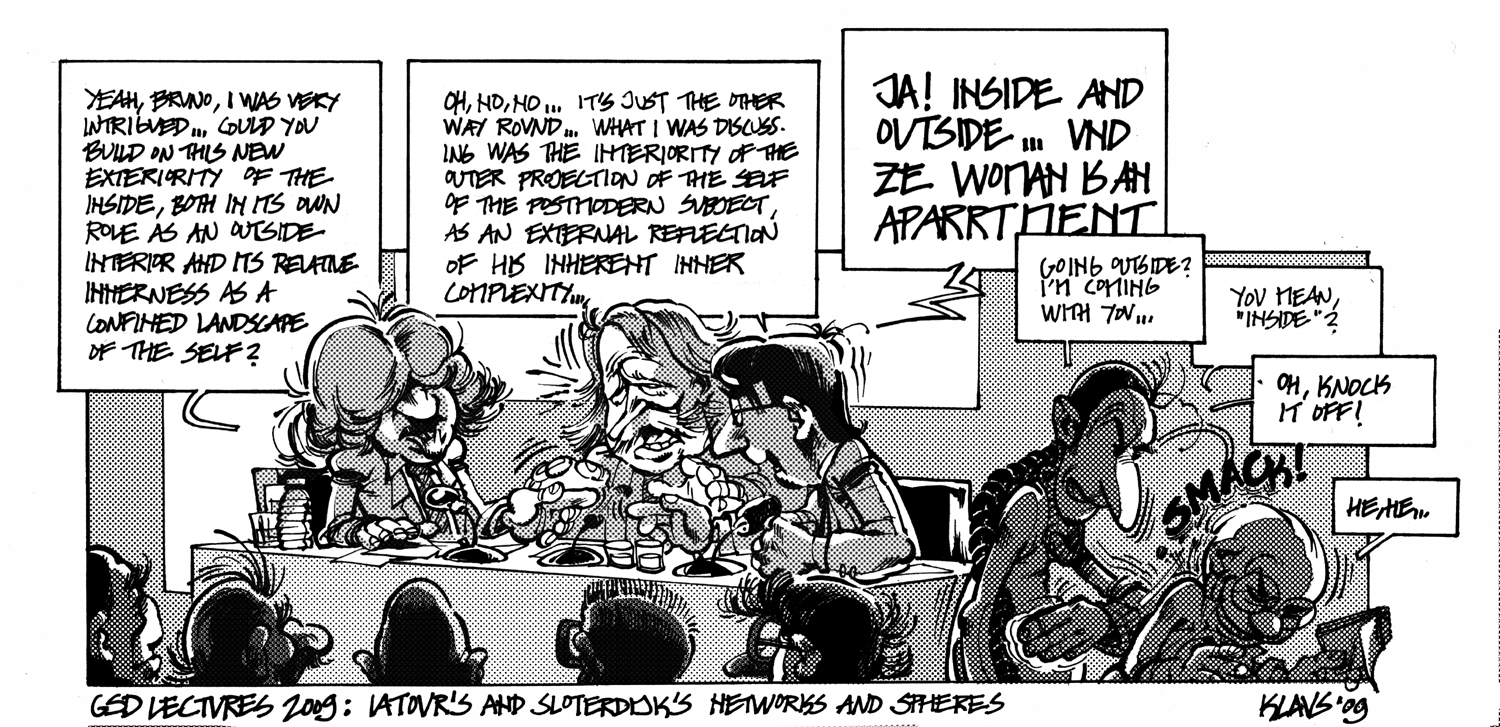Web 2.0+ User=♥? An ANT approach to User-Web relationships.
In reviewing the Digital Folklore Reader last week, I came across Olia Lialina’s essay Vernacular Web 2, in which she argues that the void caused by the demise of the playful, cheeky and, most importantly, personal homepage has been filled by dull designer-developed profile pages or templates. “The online life of a today’s user […]is disciplined and fomalized. There is a particular service offered for every format a user may want to share with the world, a community for every interest, a network for every social group.” (Lialina, 2007) Since the book reads like a love-story between users and technology, one that resulted in an offspring called digital art, you can imagine my feelings when following Lialina’s arguments towards a grim conclusion “The relationship between ordinary users and the Web of the 90s, a relationship filled with love, hate, all kinds of drama[…]that relationship is gone” (idem). This felt like a horribly bad break up and I refuse to accept it. Therefore, I endeavor to investigate this matter further. Is the Web today really “routine and taken for granted” or have we just become comfortable with this relationship that we feel we don’t have to bring it flowers and pay it compliments all the time?
How do we go about investigating the relationship between computers, software and users? We could choose to take a techno-determinist approach or a social-determinist one, but I believe this problem to be too difficult to tackle for us to start off with preconceived notions of what the Internet (or the user, for that matter) is and what it fails to be. This being the case, I would like to introduce Bruno Latour’s Actor-Network Theory (ANT) as framework (if I am allowed to use this word when referring to a theory that takes great pride in being non-theoretical) for my research.
When talking about the name of ANT, Latour notes that this is “a name that is so awkward, so confusing, so meaningless that it deserves to be kept.” (Latour, 2005 p.9) For ANT, there is no such thing as a domain called “social” or a “society” entity that stands as context for human activity. (van Maanen, 2009 p. 83). ANT does not impose on authors a priori definitions of their word building capacities, but tries to learn from them, “not only what they do, but how and why they do it” (Latour, 2004 qtd. in van Maanen, 2009 p. 85). What is interesting about this theory, as John Law notes, is that it is a semiotics of materiality:”entities have no inherent qualities, but only exist and aquire their performativity as a result of their relations with other entities.” (Law, 2004 p. 3). Actors, or actants, both human and non-human should be granted agency to an equal extent, in the sense that this modifies the current state of affairs, it leaves a trace. “it can be people, objects, animals, organizations, as long as they might be associated in such a way that they make others do things” (Latour, 2005 p.107) This leads us to one of the core concepts of ANT- translation. Law (2004) introduces a “vocabulary” of ANT: he notes that passages are movements between specificities, which are specific sets of relations between material actors and other entities. These passages are also called translations (or transmutations), in the sense that the passage changes the actor.
Following this train of thought, I would like to argue that people and digital technologies engage in translations on a daily basis and, therefore, are inextricably connected. Olia Lialina states that they way we produce content on the Internet, which is to say the way we are social on the internet, has changed and that some of these changes cannot be undone. This may be the case: we may never go back to sending complete strangers emails instead of leaving a comment on their blog, but these changes are a result of the flows and changes between all the actants in the digital media network: users, software, manufacturing companies, designers, media corporations, computers and so on. It is a natural evolution of a nomad, dynamic medium. We may say that the relationship between users and the web has changed, but to go as far as to say that this relationship has vanished, while being confronted with multiple evidence of activity in this ever-expanding network is, in my opinion, farfetched. I believe that the study of relationships between users and digital media is one of the instances in which taking the bottom-up “follow the actor” approach is more suitable than starting our investigation from analyzing the results of the flows that make up said relationships.
Works cited:
Latour, Bruno. Reassembling the social: An introduction to Actor-Network Theory. Oxford: Oxford University Press. 2005.
Law, John. “After ANT: complexity, naming and topology” In Law, J. and J. Hassard (Eds.) Actor Network Theory and After, Oxford: Blackwell. 2004. pp. 1–14.
Lialina, Olia. Vernacular Web 2. http://www.contemporary-home-computing.org/vernacular-web-2/
Van Maanen, Hans. How to Study Art Worlds.On the Societal Functioning of Aesthetic Values. Amsterdam: Amsterdam University Press. 2009. pp. 83-104




